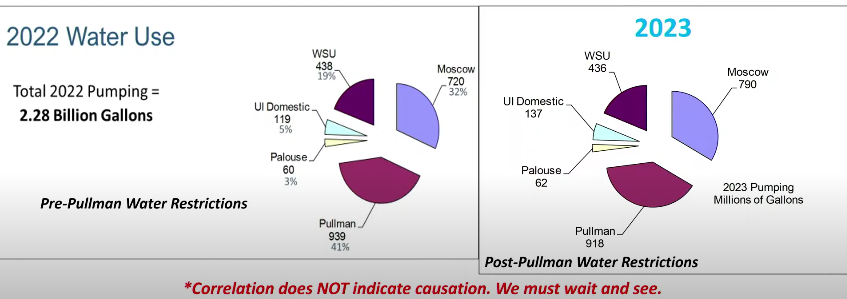Pullman experienced a high temperature of around 84 degrees Oct. 8.
Daniel Butler, Spokane National Weather Service general forecaster, said a temperature increase such as this was not entirely unprecedented.
“It was certainly within the realm of pretty extreme for October,” he said. “But we had a pretty good indication that the temperatures were gonna be very warm.”
October has an expected average maximum temperature of 59 degrees, Butler said. The increase experienced on Oct. 8 was likely due to strong overhead pressure, which is not an unusual occurrence, he said.
Pullman’s minimum temperature is increasing, which may lead to warmer nights, Butler said. Aside from this, the temperature spike isn’t something too alarming, he said.
“A high of 80 degrees in October is unusual, yes,” he said. “[If it is] concerning for October, it’s tough to say but it doesn’t seem like it would be really concerning.”
Dmitri Kalashnikov, environmental and natural resource sciences Ph.D. candidate, said a temperature increase such as this is not entirely new to Pullman as the monthly record of 90 degrees happened in both 1992 and 2008. Abnormal temperatures in October can be expected due to the changing of the seasons.
“October is a very transitional month, where the early part is more like summer,” he said. “During the month, you really quickly transition to late fall-type conditions, so the numbers for the second week of October should be about 65 degrees for a high.”
The temperature increase was likely due to a heatwave, Kalashnikov said. The heatwave was a kind where a big ridge of high pressure formed.
“There’s hot air in the atmosphere, it’s dry and because of that, temperatures warm up,” he said. “[It’s the] same mechanism you would see in the summer when it its 100 degrees.”
Arjan Meddens, School of the Environment Assistant Professor, said while this kind of temperature increase was not unexpected, the speed at which temperatures are rising is abnormal and could possibly be related to climate change.
“Even though we say we cannot relate individual weather events to climate change, we’ve been breaking all of these records,” he said. “It’s hard to predict that next year we’ll have another really warm fall, but it’s possible and it’s more likely with climate change occurring. I would say if we think about over longer time spans like over the coming decade, I think the fall or winter seasons on the Palouse are shrinking and the warm season is sort of expanding.”
Kalashnikov said he also believes this may be related to climate change.
“The atmosphere is generally warmer than it was 20 or 50 years ago,” he said. “The exact same typical heatwave pattern that happens now is going to be warmer than had it happened 50 years ago.”
In Pullman and the greater Eastern Washington area, these warmer temperatures could have a great number of larger environmental impacts, Meddens said.
“You can think about a longer wildfire season. You also have a longer growing season or a shorter winter,” he said. “It can change bird migration patterns … The other thing is if we have these really warm temperatures and then we go into a cold snap, that can be sort of detrimental for a lot of plant species because they’re not really used to that [sudden change in temperature].”
Meddens, who studies forest ecosystems, said insect populations may experience abnormal population increases which can in turn negatively impact ecosystems.
“Bark beetles that kill trees can take one or two years to have a brood, and sometimes that can switch to a one-year cycle. So then you can imagine that these insects [will] have a more severe population the next year if they don’t get killed off by frost,” he said. “So then that impacts the trees that are getting killed, and that has a long effect of less carbon being taken up so there’s more carbon going into the atmosphere. Those are effects that might have sort of a cascading effect.”
These temperatures may also impact Pullman’s air quality as less rain and an increase in dry and hot weather can lead to poor air quality, Meddens said. Water in Pullman may also be impacted.
“We have a lot of temporary creeks around the Palouse and these might dry up earlier and we might lose some of those for sure,” he said. “Farmers might have less soil moisture content which probably increases the risk of crop failure.”
Awareness is a key aspect of working to lessen drastic environmental changes, Meddens said.
“We really need to work together to reduce our overall footprint. What we can do is be aware and be climate smart,” he said.



















